一:跨库查询
Openrowset/opendatasource() is an ad-hoc method to access remote server's data. So, if you only need to access the remote server's data once and you do not to persist the connection info, this would be the right choice. Otherwise, you should create a linked server.
开启'Ad Hoc Distributed Queries'
exec sp_configure 'show advanced options',1
reconfigure
exec sp_configure 'Ad Hoc Distributed Queries',1
reconfigure
关闭'Ad Hoc Distributed Queries'
exec sp_configure 'Ad Hoc Distributed Queries',0
reconfigure
exec sp_configure 'show advanced options',0
reconfigure
SQL如下:
select * from [User] a
left join OPENDATASOURCE(
'SQLOLEDB',
'Data Source=192.168.1.20;User ID=sa;Password=yhbj'
).Kitty2.dbo.Question b on a.Id = b.UserId
结果:
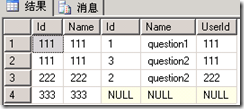
二:链接服务器
Linked server is a persistent registration for the remote server. This allows you to define the connection property once and be able to use the server "alias" over and over again.
STEP1:
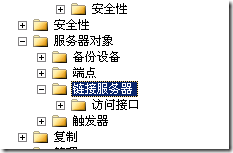
STEP2:
如果是在同一个局域网内,不妨直接选中“SQLSERVER”链接,
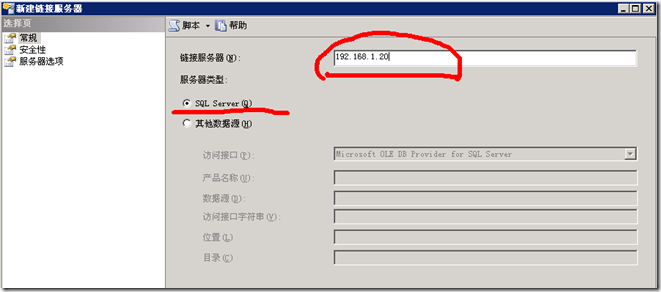
STEP3:
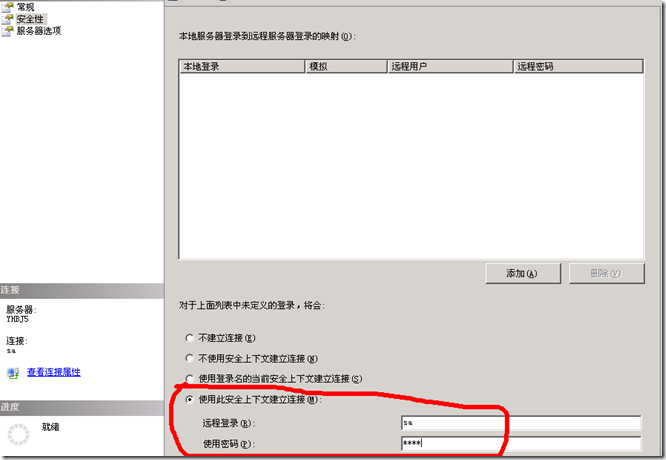
STEP4:
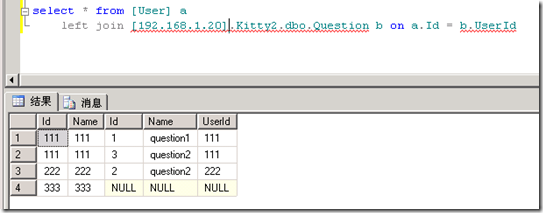
三:OpenDataSource VS Linking Server
有这样一个实例:
using linked server
SELECT * FROM mylinkedserver.[mydatabase].[dbo].[mytable]
requires 10s
but when using
SELECT * FROM OPENDATASOURCE('SQLNCLI','Data Source=myserver;User ID=sa;Password=xxxxxx').[mydatabase].[dbo].[mytable]
it lasts for 10 mins and still continue
其它基于LINK SERVER的效率问题的一些描述:
http://www.sql-server-performance.com/2007/linked-server/
四:代码实现
static void Main(string[] args)
{
var x = Query("select * from [User] a left join [192.168.1.20].Kitty2.dbo.Question b on a.Id = b.UserId ");
Console.WriteLine(x.Tables[0].Rows.Count);var y = Query("select * from [User] a"
+ " left join OPENDATASOURCE("
+ " 'SQLOLEDB','Data Source=192.168.1.20;User ID=sa;Password=yhbj' "
+ " ).Kitty2.dbo.Question b on a.Id = b.UserId ");
Console.WriteLine(y.Tables[0].Rows.Count);
}private static string connectionString = @"Data Source=192.168.1.19;Initial Catalog=Kitty1;Integrated Security=False;User ID=sa;Password=yhbj;Connect Timeout=15;Encrypt=False;TrustServerCertificate=False";
public static DataSet Query(string SQLString)
{
using (SqlConnection connection = new SqlConnection(connectionString))
{
connection.Open();
SqlDataAdapter command = new SqlDataAdapter(SQLString, connection);
DataSet ds = new DataSet();
command.Fill(ds, "ds");
return ds;
}
}
参考:
http://www.cnblogs.com/EasonWu/archive/2012/09/26/2704018.html
http://msdn.microsoft.com/en-us/library/ms188279.aspx
http://msdn.microsoft.com/en-us/library/ms188721.aspx
http://msdn.microsoft.com/en-us/library/ms188477.aspx
http://msdn.microsoft.com/en-us/library/aa259589%28v=sql.80%29.aspx
http://msdn.microsoft.com/en-us/library/aa933295%28v=sql.80%29.aspx
http://msdn.microsoft.com/en-us/library/aa259581%28v=sql.80%29.aspx
http://www.codeproject.com/Articles/35943/How-to-Config-Linked-Servers-in-a-Minute#